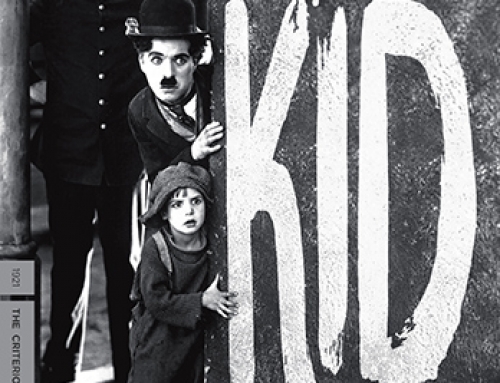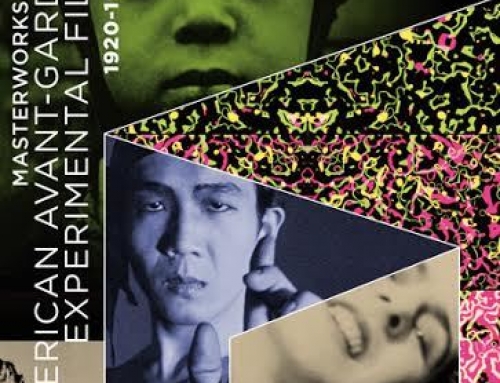Last week, for those who missed it, I started a series of posts devoted to the work of Charlie Chaplin as a lead up to Taschen’s release of The Charlie Chaplin Archives, a wonderfully in-depth look at Chaplin’s life and work through text and photography. In the prior post, we covered Chaplin’s first year in film, from the end of 1913 through 1914, when he worked with Keystone (see here). When Chaplin’s contract with Keystone was up, he moved on to another studio, the Essanay Film Manufacturing Company, for another year-long contract, this one covering 1915. Flicker Alley recently announced that in November they’ll be releasing what promises to be a wonderful edition of Chaplin’s Essanay Comedies. But since that is not out yet, let’s pass over it for now (we’ll return when the set comes out!) and move on to Chaplin’s next studio contract with the Mutual Film Corporation, where Chaplin made twelve two-reelers during 1916 and 1917. All twelve films were lovingly restored and are collected in a beautiful release from Flicker Alley, Chaplin’s Mutual Comedies.

Chaplin’s Mutual Comedies was produced to commemorate the 100th anniversary of the Tramp, the world-famous character Chaplin created in 1914 while at Keystone. When Chaplin left Keystone for Essanay, his first preoccupation was finding and purchasing the costume that he had already made famous. Chaplin carried The Tramp, and characters with other names — Street Musician, Drunk, Vagabond, Immigrant — but looking similar, to all of his studios, and it’s delightful to see the familiar character show up in Chaplin’s first Mutual comedy, The Floorwalker, which came out with a movie poster proclaiming, “I am now with Mutual.”
 Personally, I believe that Chaplin’s best shorts were produced while he was at Mutual, and this string of brilliance starts with The Floorwalker where Chaplin forged many familiar gags (and still does them better than most). This 24-minute short, in which Chaplin, playing “The Impecunious Customer” at a clothing store, walks into an embezzlement scheme, features the first “running staircase” gag and one of the first, if not the first, mirror gag in which two characters who look alike mimic each other’s movements (think The Patty Duke Show). The Floorwalker is a great opening to this phase of Chaplin’s career.
Personally, I believe that Chaplin’s best shorts were produced while he was at Mutual, and this string of brilliance starts with The Floorwalker where Chaplin forged many familiar gags (and still does them better than most). This 24-minute short, in which Chaplin, playing “The Impecunious Customer” at a clothing store, walks into an embezzlement scheme, features the first “running staircase” gag and one of the first, if not the first, mirror gag in which two characters who look alike mimic each other’s movements (think The Patty Duke Show). The Floorwalker is a great opening to this phase of Chaplin’s career.
 After playing the title character in The Fireman, Chaplin went on to deepen the character of The Tramp (called “A Street Musician”) in The Vagabond. While comic and loveable, up to now The Tramp was mostly a slapstick character, getting into and out of messes with great timing and mannerisms. But with The Vagabond comes another facet that makes the character more endearing: pathos. Here we see The Tramp take hard knocks and keep moving, here we see him share what little his has to help someone else (the “Gypsie Drudge” played by Chaplin’s off-screen romance of the time, Edna Purviance), here we see love budding from humble kindness. It’s funny and heart-warming, foreshadowing the brilliant work Chaplin was yet to do.
After playing the title character in The Fireman, Chaplin went on to deepen the character of The Tramp (called “A Street Musician”) in The Vagabond. While comic and loveable, up to now The Tramp was mostly a slapstick character, getting into and out of messes with great timing and mannerisms. But with The Vagabond comes another facet that makes the character more endearing: pathos. Here we see The Tramp take hard knocks and keep moving, here we see him share what little his has to help someone else (the “Gypsie Drudge” played by Chaplin’s off-screen romance of the time, Edna Purviance), here we see love budding from humble kindness. It’s funny and heart-warming, foreshadowing the brilliant work Chaplin was yet to do.
In his next film, One A.M., Chaplin moved away from The Tramp to play a wealthy drunk he stumbles home and has trouble getting to bed. While One A.M. moves away from The Tramp and from the pathos Chaplin had fostered in The Vagabond, the film is hilarious, one of my favorite for the gags, which include a sliding carpet, more stairs, and a terribly uncooperative murphy bed.
Through the remainder of 1916, Chaplin made four more two-reelers: The Count, The Pawnshop, Behind the Screen, and The Rink (in which Chaplin shows off his skating skills that will thrill us in Modern Times).
In 1917, Chaplin made four of my favorites. First came Easy Street, in which he plays a diminutive police recruit who is assigned the toughest beat, due entirely to the fact that Eric Campbell’s The Bully controls the area.

 Next, The Cure, in which he plays another wealthy drunkard (in order to keep the drunkenness funny). The last two from Mutual — The Immigrant and The Adventurer are my two favorites, both for their content and for their curiosities. In The Immigrant, Chaplin plays a poor immigrant struggling both on the boat and on the land. In one scene, he kicks an immigration officer, a scene which in the early 1950s was used as evidence that Chaplin was un-American. In The Adventurer, Chaplin plays an escaped convict who encounters the good graces of a wealthy family after he saves Edna Purviance from drowning — of course, Edna’s suitor (the last role played by Eric Campbell, who died in a drunk driving accident in late 1917; he appeared in eleven of the twelve films here, so this is a nice remembrance of his skills) wants nothing of the new arrival.
Next, The Cure, in which he plays another wealthy drunkard (in order to keep the drunkenness funny). The last two from Mutual — The Immigrant and The Adventurer are my two favorites, both for their content and for their curiosities. In The Immigrant, Chaplin plays a poor immigrant struggling both on the boat and on the land. In one scene, he kicks an immigration officer, a scene which in the early 1950s was used as evidence that Chaplin was un-American. In The Adventurer, Chaplin plays an escaped convict who encounters the good graces of a wealthy family after he saves Edna Purviance from drowning — of course, Edna’s suitor (the last role played by Eric Campbell, who died in a drunk driving accident in late 1917; he appeared in eleven of the twelve films here, so this is a nice remembrance of his skills) wants nothing of the new arrival.
This set of Mutual Comedies is indispensable, showing as it does the time when Chaplin really took control of his creative efforts. In addition to his salary of $670,000 per year (making him the highest paid entertainer in the world), Mutual built Chaplin his own studio and gave him total control over the twelve projects: Chaplin wrote, directed, and produced each of the twelve films.
We are fortunate to have them at all, of course; nearly everything else produced at Mutual has been lost. Chaplin’s fame have led those in charge to take much better care of these films. That care and love has been extended to the restorations and compilation of this essential set.
After Chaplin left Mutual, he worked at First National before starting up United Artists where he created most of his best known features. In this series of Chaplin posts, I’m focusing only on home video releases from Flicker Alley and The Criterion Collection, so the next one up is Chaplin’s 1925 feature, The Gold Rush. Join in next week!
Supplements:
- This set includes a 52-minute documentary by Serge Bromberg and Eric Lange called The Birth of the Tramp. It’s a great look not only at the famous character but also on the development of cinema at the time, from a novelty to an industry.
- Also included, and further adding to the value of the set as a look at Eric Campbell’s final year, is the 54-minute 1996 documentary Chaplin’s Goliath: In Search of Scotland’s Forgotten Star, looking at the life and career of Campbell.
- The set also comes with a wonderful booklet, featuring an in-depth essay as well as notes on each of the films by Jeffrey Vance.








This looks like a terrific set. I’ll be eager to see the Essanay set come out too. Despite having lived for decades here in the San Francisco Bay Area, I only a couple of years ago discovered, to my enormous surprise, the Essanay studios tucked away in the foothills across the bay in Niles, a must-stop for Chaplin fans (it’s where The Tramp was filmed). I’ve seen a few of the Essanay films there, as they have a great little silent pictures cinema that shows films regularly, plus a silent film museum.
Oh, that is a must-stop next time I’m in the area, Scott!